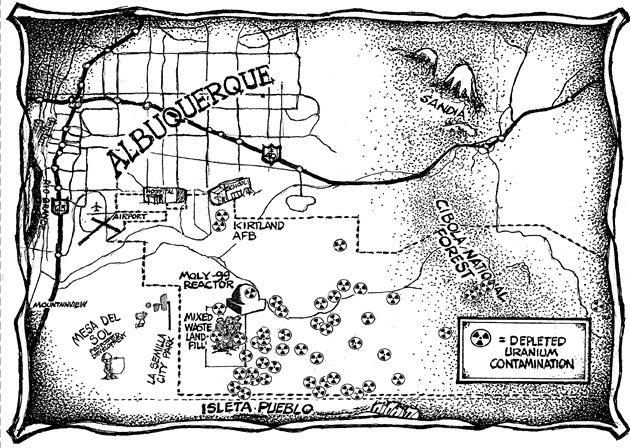
Amigos Bravos
Amigos Bravos is one of 39 environmental and peace organizations that won a landmark lawsuit against the U.S Department of Energy for failure to follow-through on adequate environmental cleanup during its 50+ years of nuclear weapons research, testing, and production. Part of this settlement was the establishment of the MTA Fund (Citizens’ Monitoring and Technical Assessment Fund), which provided $6.25 million for tribes and non-profit organizations to assess and conduct independent technical and scientific studies regarding the multitude of technical, ecological, and health issues surrounding the nation’s nuclear weapons complex.
Clark University was chosen by the non-profit peace and environmental groups as the conservator of these reports to ensure they remain available to the public in perpetuity. The unconventional election of university as conservator is an innovative example, particularly within the era of Web 1.0, of higher education as protector and provider of information through wide dissemination.
The research and reports available in this series were conducted by Amigos Bravos with their allocated portion of the MTA fund.
If you have any questions or concerns please contact us at digitalrepository@clarku.edu.
-

Historic and Current Discharges from Los Alamos National Laboratory: Analysis and Recommendations
Amigos Bravos and Concerned Citizens for Nuclear Safety
The movement of pollutants in stormwater is an issue of grave concern at Los Alamos National Laboratory (LANL). For the past 63 years, LANL’s nuclear and industrial activities have generated an enormous amount of solid, hazardous, and radioactive waste. Most of the waste has been stored or buried on-site in unlined disposal pits, trenches and shafts. These contaminated areas are referred to as Solid Waste Management Units (SWMUs), Areas of Concern (AOCs), or Potential Release Sites (PRSs).
Amigos Bravos and Concerned Citizens for Nuclear Safety (CCNS) have reviewed the historic and current discharges from LANL and taken steps toward ensuring that toxic wastes are cleaned up and future discharges are limited. Experts in hydrogeology, water toxicology, and state and federal regulatory processes have helped with this review. These experts and Amigos Bravos and CCNS staff:
• Reviewed and analyzed historic and current discharges to ephemeral and intermittent streams emanating from the Pajarito Plateau, their potential impacts on human and wildlife health, and their relationship to long-term stewardship efforts at LANL;
• Reviewed, analyzed, and commented upon National Pollutant Discharge Elimination System (NPDES) permits regulating discharges from LANL to ensure that the (re)issuance of new permits will result in the most stringent pollution limits and controls possible;
• Analyzed the nature and movement of pollutants between surface and groundwater discharges from LANL;
• Reviewed and analyzed stormwater runoff issues at LANL; v
• Communicated our findings to the public, assisted communities surrounding and downstream from LANL in understanding the threat LANL poses to the Río Grande watershed, and explained the ways in which stringent NPDES permits helps to protect the river;
• Held conversations with decision-makers in state government, the Environmental Protection Agency (EPA), Santa Fe city and county governments, and Pueblo governments regarding oversight responsibilities and opportunities in protecting the Río Grande watershed and regional groundwater sources
This research was completed money allocated during Round 6 of the Citizens’ Monitoring and Technical Assessment Fund (MTA Fund). Clark University was named conservator of these works.
If you have any questions or concerns please contact us at digitalrepository@clarku.edu


